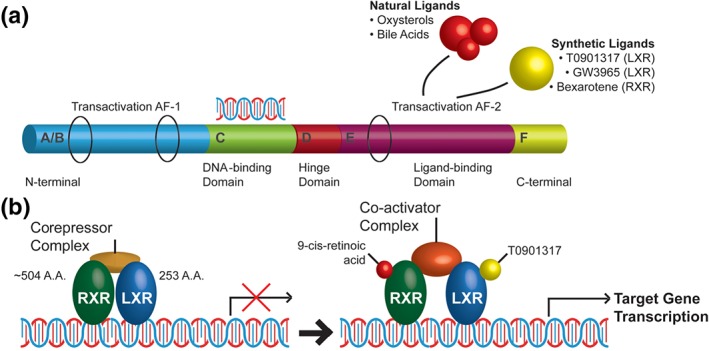Figure 1.

Molecular structure and ligand activation of nuclear receptors. (a) Nuclear receptors share a common structural organization with six domains (A through F): two regulatory transactivation domains, one at the N‐terminus, AF‐1, and another—AF‐2, at the C‐terminus. AF‐1 and AF‐2 are separated by DNA‐binding domain, a hinge—domain involved in dimerization, and a ligand‐binding domain; the C‐terminal, F‐region downstream from AF‐2, is highly variable and exists only in some of the receptor subfamilies. (b) LXR/RXR heterodimers in the absence of a ligand are tightly bound to a corepressor complex and a response element, usually upstream of the target gene. Ligand binding results in conformational change of the heterodimer, dissociation of the corepressor complex, recruitment of co‐activators, chromatin remodelling, and transcriptional activation
